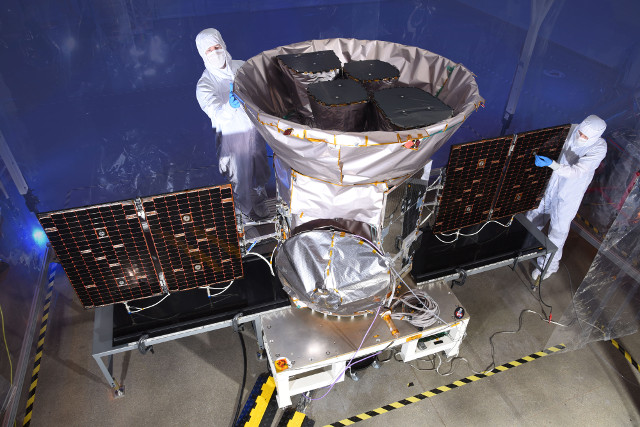
A few hours ago NASA’s TESS space telescope blasted off atop a Falcon 9 rocket from Cape Canaveral. After almost 50 minutes it separated successfully from the rocket’s last stage and reached a transfer orbit where it will start a number of maneuvers that in about two months will take it to the very elliptical final orbit where it will begin its scientific mission.
The contract with NASA required SpaceX to use a new first stage for the rocket that launched the TESS space telescope. A few minutes after take-off, that first stage successfully landed on the autonomous drone ship “Of Course I Still Love You” a few hundred kilometers off the coast, in the Atlantic Ocean.
The TESS (Transiting Exoplanet Survey Satellite) space telescope is the new NASA planet hunter tasked with examining some 500,000 stars relatively close to Earth during its two-year primary mission. The hope is to find thousands of new exoplanets including some hundreds of super-Earths.
In some ways, TESS is considered the successor of the Kepler space telescope. In fact, it will also search for exoplanets using the transit method, observing the very slight drops of brightness that occur in the stars examined when one or more planets pass in front of them. However, there are also many differences.
The TESS mission is very specialized for a relatively small and simple telescope, with a mass at launch of about 350 kg (772 lbs), almost exactly one-third of Kepler’s mass at launch. TESS was built to examine the whole sky with all the stars with a size similar to the Sun’s or smaller with an apparent magnitude greater than 12.
TESS’s orbit will be different from those used for other space telescopes because it will be very elliptical, with a perigee of about 108,000 kilometers (67,000 miles) and an apogee of about 375,000 kilometers (233,000 miles) and an orbital period of about 13.7 days, half of the lunar period. It’s the first time that such an orbit has been chosen, where TESS’s observations will have no obstacles, and its 4 cameras, designed by MIT, will remain at stable temperatures.
To reach that final orbit, TESS will have to perform a number of maneuvers that will last about two months. The final elliptical orbit is expected to remain stable for at least 20 years. The possibility of discovering relatively small exoplanets in the cosmic neighborhood will allow to better manage follow-up observations with other instruments. The launch of the James Webb space telescope was delayed again, this time to 2020, but there are also other instruments that can be used to study exoplanets.



Permalink
Permalink
Permalink
Permalink
Permalink
Permalink
Permalink
Permalink
Permalink
Permalink
Permalink
Permalink
Permalink
Permalink
Permalink
Permalink
Permalink
Permalink
Permalink
Permalink
Permalink
Permalink